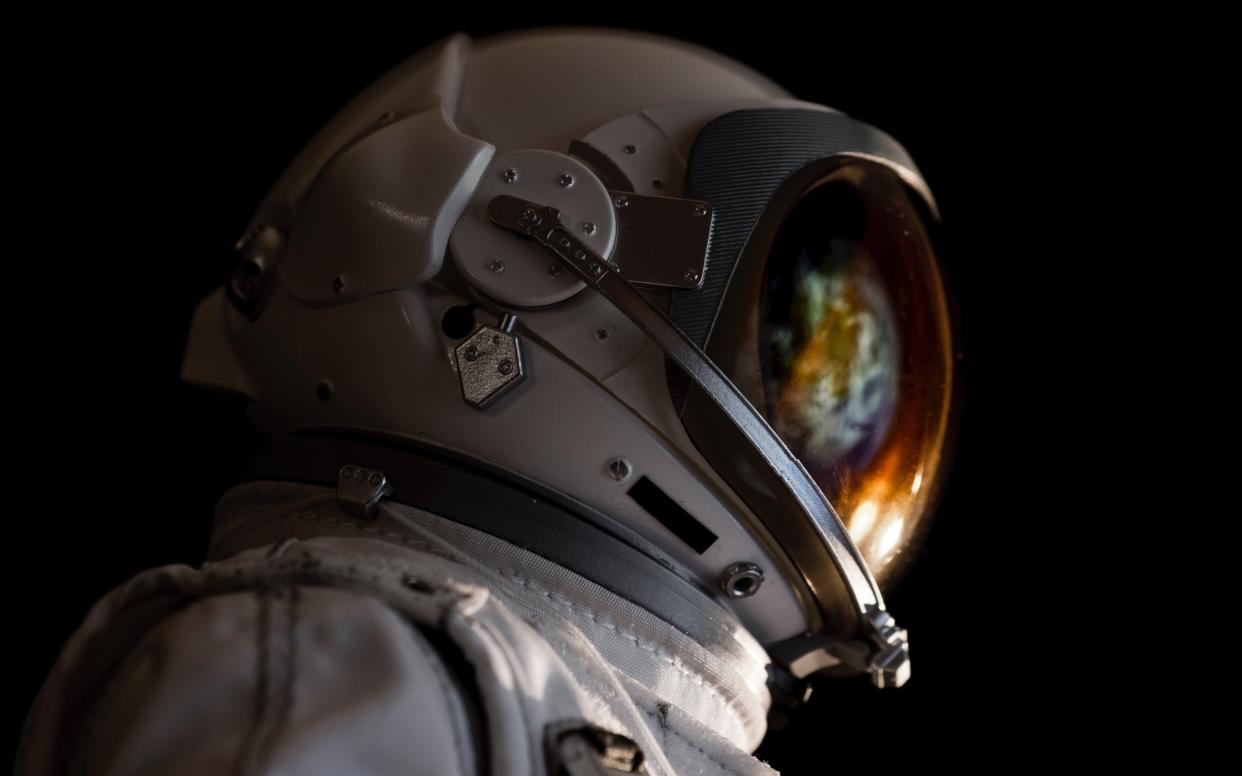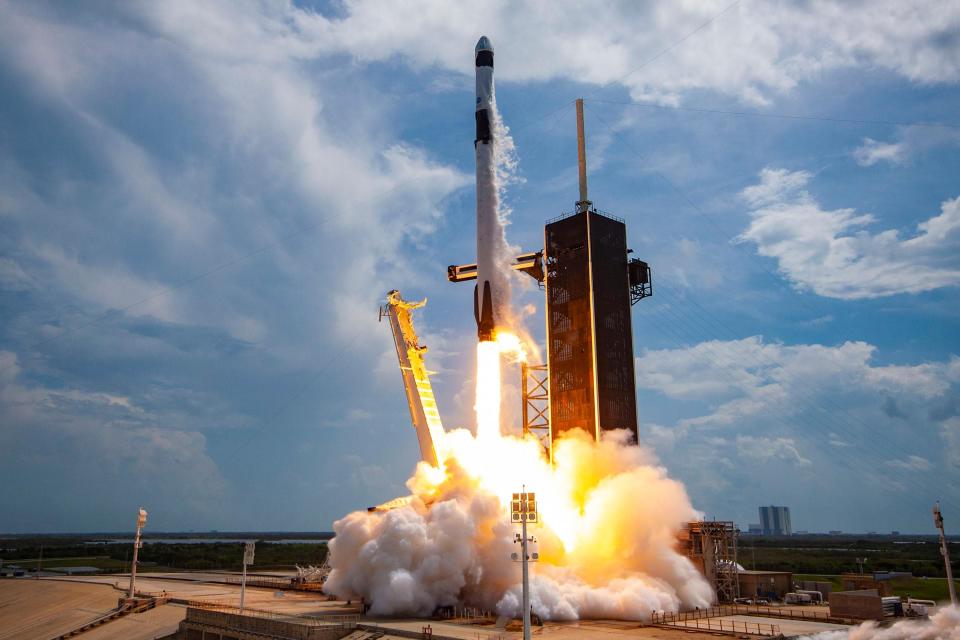Imagined: how a space holiday might look in 30 years

SpaceX’s successful launch and arrival could herald the beginning of cosmic tourism. Chris Moss takes a warp-speed flight of fantasy
All I can see through the hotel window is a reddish beach under artificial lights, an empty car park, some stunted saplings in tubes that have struggled in the atmosphere, and a mean-looking security guard on his midnight rounds.
It’s not, actually, that different from staying on the front at Torbay. But a weekend break on Mars certainly endows a traveller with more bragging rights. I’ve been sharing the whole thing on social media channels and the envy emanating from lunar tourists who are begrudgingly “liking” my posts is as green as your average picture-book alien.
Let’s face it, space tourism – only 30 years after the Space X launch – is still in its infancy and it’s all about the journey. The launch was, to be honest, a bit tedious. Having put up with no end of courses and sweaty gym sessions, diets and simulator journeys, we passengers – ten of us; myself and nine billionaires – had to go through dozens of last-minute checks and rechecks once we were strapped in.
Then the stewardess droned robotically through the “abort” procedure, and how we must stay calm while travelling at ten times the speed of sound on a downward trajectory. There were no cocktails or fine wine, tubed food only, and, of course, the WC was built into the seat of my Michelin-man pants. It almost made me nostalgic for Ryanair – only almost, mind you.
The G-forces made up for it. I watched the flames flare up on the screen on the back of the seat in front and then sat back and enjoyed the ride. For all the padding and insulation, you can feel about three times gravity on your face. It’s a bit like having your hair brushed before school by your mum, except this mum is rather muscular and a bit rough.
It was pretty obvious I was the only novice space-traveller on the flight. Even as we accelerated at 20 times the speed of a bullet, the other passengers were already reading or listening to music (the playlist was your standard cosmic hit parade of David Bowie, Chris de Burgh and Police, and that cheesy Chris Hadfield cover). I, though, was looking out of the window like a wide-eyed five year old.

After three seconds, I could see Land’s End; after 20 I could see the Azores, and after two minutes I could make out the edge of the eastern seaboard of the United States – and the sublime curving horizon of our blue planet. Then it all went dark – in a good way.
For some reason I’d expected turbulence on leaving the earth’s atmosphere, perhaps even some flames. But the Falcon 500 – the latest upgrade on the rather basic white torpedo that went up 30 years ago – is smooth all the way up. Do you feel like you’re travelling at 25,000mph? No, which is sort of cool – and a bit boring. I’m told the re-entry can be somewhat more “interesting” but I’ll report on that when I get home (Inshallah).
With all the fun, I’d not paid any attention to the hardware we were ditching as we climbed. But, to be honest, all the talk of meco (main engine cutoff), seco (second engine cutoff) stage separation, evac etc is distracting, as well as a classic case of Too Much Information; imagine hopping on a plane and being told the wings have fallen into the English Channel.
The next ten hours were almost as normal as a flight to Singapore. I watched a Jane Austen film, sucked on some tomato soup (not bad, but nothing special), chatted to a couple of passengers – as I’d guessed, they were from mining firms, mixing business with pleasure – and dozed. We stopped to drop someone at a space station; apparently he had to pilot a Russian module back to Kazakhstan.
A day or so later (it all blurs into one when there’s no real dawn or dusk and you can’t move except for wriggling your fingers and toes) we catapulted around the dark side of the moon – increasingly the package destination of choice for the nouveau riche – and then started the long haul to Mars. Or should I say “Mars”.
The moon is just 240,000 miles away. Unfortunately, they’ve only managed to get the 140 million miles separating Cornwall from Mars down to 250 days. So, I was visiting the new Mars theme park that floats just a little bit higher than the creaking old ISS. Built by Disney at a cost of a mind-expanding £500bn, Mars World is about as Martian as the Cinderella Castle is Bavarian.
But at least you can take your helmet off in the bar of the Sea of Sirens 9-star hotel, enjoy a drink or two – be advised: they put crème de menthe in everything – and talk about Earth with your fellow guests.
I was tired after the flight and looking forward very much to sleeping under a zillion stars. But of course there was a telescope in the room and I couldn’t resist. There was the moon, silver in its inky nothingness, and I managed to spot Venus and Saturn, too. The sun looked like a cold, lonely and rather small starlet.
The biggest high about space travel, the old-timers say, is looking back at our planet, to home. Unfortunately, it was cloudy in northwest Europe and I was too tired to wait for it to clear, but I was assured by the in-room cybermaid that the forecast was good for tomorrow, whenever that might be, and that on a clear day you can see the snowy summits of the Alps, the grey sprawl of Paris and the beach at Paignton.
How you might do it
Chris Moss travelled as a guest of Space Virgin (020 2001 1999; bransonmuskventures.com), on the new service between Newquay Spaceport and Mars World. A three-day stay at the Sea of Sirens, with all meals and fully guided rover tours, starts from £12millionpp.

